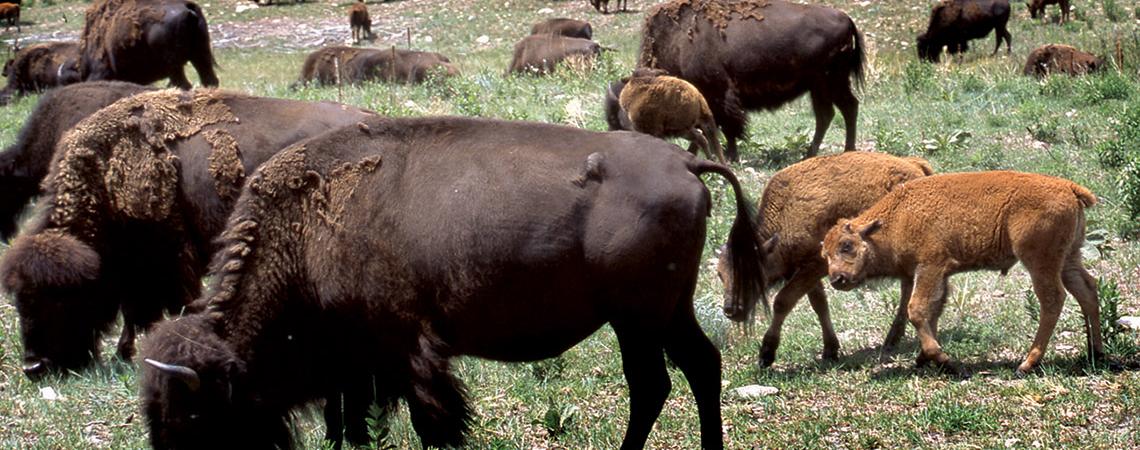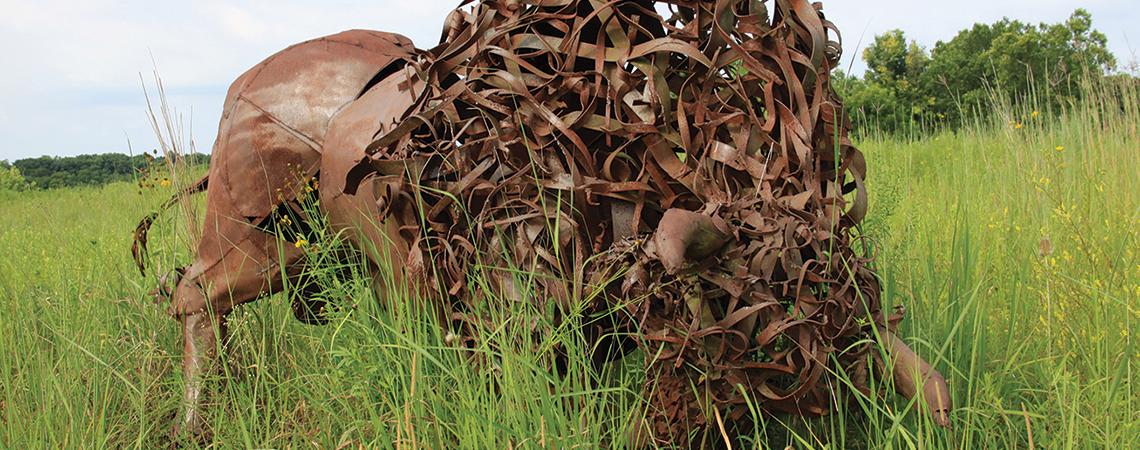The year 1803 was pivotal in Ohio history. It was a year when what had always been — the frontier — was rapidly passing away, and what would be was now arriving.
Ohio became the 17th state of the Union in 1803, an event enthusiastically celebrated by Buckeyes of the time. But another significant event occurred that same year, an event noticed by only a few. It was the year the last wild bison was shot and killed in Ohio, near the present site of Vesuvius Furnace in Lawrence County, at the southernmost tip of our state. It marked the beginning of the end of the state’s wilderness era, a time that likely will never come again.
Bison herds still thrive at national and state parks throughout the West.
Other large wild animals living in the state, what present-day wildlife biologists refer to as “charismatic megafauna,” were soon to follow the bison into extirpation. Elk were gone by 1838, wolves by 1848. Some reports claim that mountain lions may have survived until as late as 1850.
The largest North American land mammal in existence today, bull bison measure 6 feet at the shoulder and can weigh a ton. Females, known as cows, are about half as large. Bison were never as numerous in the Ohio country as they were on the Great Plains — the massive herds there were estimated at 30 million to 60 million animals. But nevertheless, Ohio once had significant numbers of bison, particularly in and around the prairie openings that interspersed Ohio’s virgin forests.
In historian David McCullough’s 2019 book, The Pioneers, an in-depth history of Marietta, Ohio, he quotes an unidentified settler who wrote in a letter to his family back east:
“This country, for fertility of soil and pleasantness of situation, not only exceeds my expectations, but exceeds any part of America, or Europe, I ever was in. We have started [startled] twenty buffaloes [bison] in a drove.”
In a much earlier book, History of the Northern American Indians, written in 1780, David Zeisberger, a missionary to the Delaware Indians in Ohio, wrote of bison:
“At one time these animals appeared in great numbers along the Muskingum [River], but as soon as the country begins to be inhabited by the Indians, they retire and are now only to be found near the mouth of the above-named river. Along the banks of the Scioto [River] and further south, both Indians and whites say that they may be seen in herds numbering hundreds.”
Some bison have returned to Ohio in recent years, but these are not free-roaming as their ancestors were hundreds of years ago. Rather, most of today’s bison are raised like cattle on farms for meat or kept confined as zoo animals.
If you’d like to see bison on the open range — as they would have appeared during pre-settlement times — Battelle Darby Creek Metro Park near Columbus maintains a small herd near its nature center. A good time to visit is mid- to late summer when the surrounding prairies are in full bloom. If you’re headed west on vacation this year, the National Bison Range located near Moiese, Montana, and managed by the U.S. Fish and Wildlife Service is well worth a stop. Visitors are permitted to drive through the refuge to view the herds.
Established in 1908 by President Theodore Roosevelt, the national refuge helped save the American bison from extinction. By the late 1800s, the total bison population in America had dwindled to less than 100 animals in the wild. Today, several hundred free-roaming bison are maintained on the refuge, with other large herds now thriving on national and state parks throughout the West — theirs is a historic wildlife recovery story.
W.H. “Chip” Gross is Ohio Cooperative Living’s outdoors editor and a member of Consolidated Cooperative.











